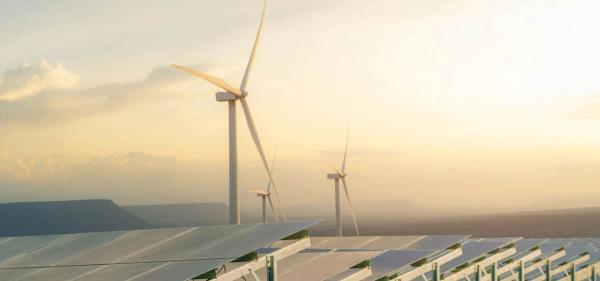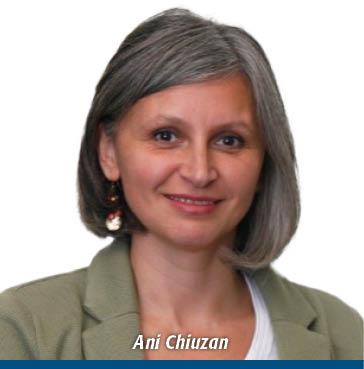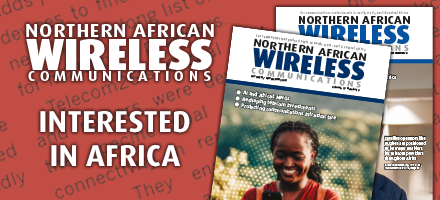05 December 2023

As mobile generations advance across southern Asia, tower power demands grow to extraordinary levels – how can this best be managed?
The technologies utilised in the tower sector have advanced in leaps and bounds in recent years in line with the expansion of new mobile generation rollouts. As we witness the technological shift from 3G, 4G, and 5G, it’s essential to grasp the substantial increase in power demand, says James Gray, director of telcom strategy, PowerX.
“If you previously had 300 sites to support 3G, you would now require around 700 sites to meet the power demands of 4G. The power requirements surge as well. A 3G site typically consumed up to 3.5Kw, while a 4G site would demand around 6Kw. The introduction of 5G takes it even further, with sites needing 11-12Kw, reflecting a substantial increase in power demand,” says Gray.
Macro towers are usually built with enough space for more than one set of equipment on them so they can accept network equipment from a new operator or a technology upgrade easily, as per Matthew Edwards, product director, TowerXchange.
However, “in parts of southeast Asia, you can see areas where 2G, 3G, 4G and 5G are all required for different customer segments, which can overwhelm a tower,” says Edwards. “One solution is to phase out 2G or 3G to reduce site load, or to move the 5G network layer to smaller sites like smart poles or small cells. Increasing data usage in places like India mean that sites are becoming more loaded as more network capacity is required.”
This technology growth is placing more pressure on existing – sometimes outdated – cell towers.
“The reality is that the infrastructure that has been put in place and designed for 2G/3G has to pretty much change in flight,” says Ani Chiuzan, CMO, PowerX. “The tower design paradigm must shift to better forecasting of telecom load, both in terms of taking growth rate - for subscribers and data - into account, but also designing it with hybrid power solutions in mind.”
While grid may be available and stable, energy cost is high, and the infrastructure needs to reduce its footprint on the environment and achieve net zero - so hybrid solutions must be part of the initial design for power.
“It’s paramount to use data on historical operations to be able to forecast power demands and utilise assets with better accuracy. Otherwise, it’s going to be a guess work based on manufacturers specifications that don’t always meet the reality of the assets and operations,” says Chiuzan.
To address this expansion in energy demand, it has become vital to have larger battery backups to support infrastructure during grid outages, as well as an upgrade in power infrastructure. “The focus is on ensuring a stable power supply to meet the heightened power requirements, aligning with the increased energy demands of the evolving mobile technology landscape,” adds Gray.
Sustainable power
“The towerco model is inherently sustainable, sharing steel, reducing truck rolls, and investing in renewable energy solutions, making every Gb consumed more efficient. But, if more people use more data, then it can look like the industry is getting dirtier,” says Edwards.
Nothing could be further from the truth.
Just 12-14 years ago, sustainability wasn’t on the radar for most towercos, with minimal mention in contracts or discussions. The recent shift towards embracing sustainability is now evident, with a clear focus on environmental, social, and governance (ESG) targets. With this shift, it has become easier to integrate renewable solutions into design and operation.
“An essential factor contributing to this shift is the increasing economic feasibility of solar,” says Gray. “In the past, solar power was scarcely discussed, largely due to its exorbitant costs, poor understanding, and inefficient specifications. However, the industry has witnessed a transformative change with the emergence of affordable solar solutions in tandem with the introduction of lithium ion batteries. This timely convergence has enabled the development of more compact tower sites, fostering sustainability in the process.”
There are numerous benefits gained from the move to renewable energy, including the declining costs of renewables, which significantly impact the economics of tower operations; as well as substantial environmental and ESG advantages.
“The integration of renewables into tower design has presented challenges, but there is a growing recognition of the importance of this endeavour,” says Andrew Schafer, CEO, PowerX. “Renewables are steadily moving into the mainstream, primarily driven by the decreasing cost of renewable technologies. This cost reduction is making the deployment of renewables increasingly viable and attractive.”
While the incorporation of renewables in tower design may pose challenges, the industry is increasingly recognizing their importance. As they become more cost-effective, tower technology will continue to evolve, driven by a growing emphasis on energy efficiency, environmental considerations, and the need to reduce diesel consumption.
“In Asia, we encounter two distinct scenarios: countries with stable grid supplies and those grappling with significant grid outages,” explains Chiuzan. “The latter necessitates automatic consideration of hybrid solutions.
Once upon a time, hybrid models featured grids supported by lead-acid batteries or backup generators which often rely on diesel, perpetuating the use of generators as the default backup power source.
“To strike a balance between efficiency and sustainability, a critical shift is needed in our approach,” says Chiuzan. “The initial focus should be on reimagining our design, where hybrid power solutions incorporate lithium-ion batteries for storage, coupled with the generation of green energy from solar as the primary backup option. In this paradigm, we must view traditional models as evolving towards continuous power supply through solar and battery storage for various sites. This evolution comes with the added responsibility of adapting the skill set and training of our workforce.”
The future will likely involve the widespread use of intelligent software solutions to manage the intricacies of hybrid/multiple power sources and ensure optimal tower performance.
“The dynamics of the industry suggest a future marked by a more extensive deployment of renewables,” adds Schafer. “The efficiency of renewable technologies is expected to improve, and their costs are likely to continue their downward trajectory. This trend positions renewables as an integral component of tower design. As the cost of traditional fuels increases and awareness of their environmental impacts grows, there is mounting pressure to reduce reliance on diesel generators. The rise of solar and other renewable sources introduces complexities related to their intermittent availability. Solar, for instance, relies on daylight and varies from day to day, and season to season. This necessitates a more intelligent approach to power source management.”
Intelligent design

Ani Chiuzan
The industry is in the process of designing towers that not only stay operational but are also sustainable, aligning with the growing scrutiny and consideration of energy sources. The focus is not just on keeping the towers online - but also on powering them sustainably.
So, how can towercos continue their evolution into a greener, cleaner future?
“Solar and battery have been the biggest stories in telecom energy for several years and they’ll stay that way,” says Edwards. “The combination of cycling a lithium ion battery and getting free energy from the sun is hard to beat. In some markets wind adds to the mix as it can provide energy when solar cannot.”
Chiuzan agrees that, while solar has begun to stand out as a prominent option, “there is a noticeable surge in experimentation with wind turbines, reflecting the industry’s commitment to exploring diverse avenues. The landscape further expands with trials and innovations centred around alternative fuels, including synthetic options.”
Indeed, alternative engines and turbines are being developed that can burn clean fuels and reduce emissions. “The most important way to drive forward sustainable development in Asia is getting more capital to towercos and ESCOs to switch away from diesel generators. Networks need to expand but they must expand as cleanly as possible,” adds Edwards.
However, the implementation of renewables alone is insufficient: “they must coexist seamlessly with existing infrastructure, emphasizing the importance of technology integration for efficient operation. We underscore the significance of data-led and intelligence-driven technologies,” explains Chiuzan. “This approach becomes paramount when managing a complex hybrid power supply, necessitating data-driven decisions at scale. Without this technological overlay, there is a risk of running these assets inefficiently.”

Matthew Edwards
The advent of renewables introduces another layer of intricacy to the power source landscape, for which AI-driven software might be considered essential for optimisation. Moreover, “the incorporation of AI aligns with the evolving landscape of time-of-use tariffs and grid pricing while addressing the escalating energy demands driven by the mobile data boom,” says Schafer. “The structured grid tariffs offer opportunities for peak shaving through intelligent grid-battery interplay, and the integration of renewables necessitates AI’s role in efficient power source management. This transition isn’t just about identifying issues, but also about real-time action and autonomous tower control, emphasizing cost reduction and asset optimization as key objectives in the industry’s future.”
Emerging technologies play a pivotal role in enhancing hybrid power sources; however, “without this embrace of advanced technologies, there is no guarantee that investments in alternative power options will yield the desired returns,” asserts Chiuzan. “By emphasizing the role of data and AI in automating operations, we strive to ensure the efficiency and effectiveness of these investments in the evolving landscape of alternative power sources.”
According to Schafer, the growing recognition of the pivotal role that AI-driven software can play in managing and optimizing power sources is significant: “this realization underscores the importance of implementing intelligent systems to ensure power sources are used in the most efficient manner.”
Gray agrees that AI is poised to revolutionize tower management, particularly in challenging regions like parts of Asia: “in bustling cities like Manila and Jakarta, maintaining SLAs can be difficult due to logistical complexities. AI-powered management systems offer a solution. AI can intelligently configure sites for more efficient operation, benefiting both tower companies and mobile network operators.”
“AI can completely change the way we provide vertical real estate for telecoms,” adds Edwards. “The industry is still reliant on manual processes and overworked operations teams. AI will enable diagnoses of problems before they occur as well as improvements in processes so that more time is spent providing connectivity and less time doing paperwork.”
The challenges posed by unreliable grid infrastructure intensify the requirement for more dependable power sources. Simultaneously, tower operators face increasing pressure to provide highly available and resilient towers to meet the demands of network operators who rely on these infrastructures, says Schafer: “in this context, tower design is evolving to incorporate resilient power sources as part of the broader transition to renewables. This involves ensuring sufficient battery capacity, careful planning, and the optimization of the entire power mix.”
“The integration of AI into the realm of tower technology is poised to play a pivotal role in optimizing both the powertrain and the management of the towers themselves,” says Gray. “AI is set to be a valuable ally in this endeavour. One of its key roles will be in configuring tower sites with greater efficiency, a task that operators have traditionally handled with somewhat standardized powertrain templates, as power management isn’t their primary focus. By introducing AI into this process, sites can be run more efficiently, benefiting both tower companies and operators.”
As we look to the future, the potential for AI to transform tower operations, enhance sustainability, and support the increasing demand for mobile data, will be central.






